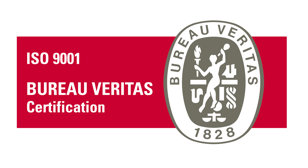Article

The utility model, an alternative to the utility patent: focus on France
The French utility model “certificat d’utilité” (literally utility certificate) is a property title that protects a technical invention. It is similar to a patent but differs in that it has a simplified examination procedure. The utility model should not be confused with the French “modèle” which aims to protect the aesthetic characteristics of a product (similar to a design patent).
The utility model contains a detailed description of the invention, illustrative drawings and claims that define the monopoly sought, just like a patent would. It is published at 18 months of the filing date (or priority date) and is governed by almost the same articles and rules of the French intellectual property code (CPI) as the patent. The most notable difference between the utility model and the utility patent resides in the non-examination on the merits of the utility model. No search report or opinion as to the novelty and obviousness of the claimed invention is drawn up. A simple formal examination is carried out before its issuance, mainly on the qualification of patentable subject matter. In a way, the utility model is a "light" patent.
Why obtaining a utility model if there is no substantive review?
First, it could be useful for protecting non key short-lived inventions. Indeed, the French utility model has a reduced lifespan compared to the patent (10 years against 20 for the French patent).
Second, due to the non-establishment of the search report, it is possible to obtain a title quicker and at a lower cost than a patent. Having obtained an official property title can play a deterrent role.
Third, it can also be used to protect inventions whose patentability is uncertain, but for which one nevertheless wishes to obtain an official title.
Fourth, it can be a steppingstone to a patent. Bridges exist in France between the utility model application and the utility patent application, allowing to obtain one from the other: a patent application can be converted into a utility model and vice versa. These bridges can be used in cases where one is not yet whether to obtain a patent or a utility model. Thanks to the new PACTE law, utility model applications filed on or after January 11, 2020 may be transformed into a utility patent application, if the transformation is requested before the technical preparations for publication (approximately 16 months from its filing or priority).
The transformation of a utility model application into a utility patent application, should be requested along with the payment of a search fee to allow the establishment of a prior art search report.
In addition, since July 1, 2020 (also part of PACTE Law), it is possible to file a provisional patent application with the French patent office (INPI), which can also be transformed into a utility model. For this, the request for conversion must be filed within 12 months of the filing (or priority) of the provisional application. Please note that the transformation into a utility model cannot contain amendments.
The utility model, when issued, can be used directly against a competitor who is presumed to be an infringer in the context of an action for infringement. However, as it has not been examined on the merits, it is necessary to have a search report drawn up by the INPI beforehand. For this, the applicant must submit a request for the establishment of the search report to the INPI and pay the associated search fee.
Even if French utility patents and utility models have common aspects, the utility model does not allow the same actions as the patent. For example, there is no centralized procedure to obtain a utility model in several countries at once, similar to the PCT or the European patent. It is also not possible to apply for a supplementary protection certificate (SPC) to extend the duration of the protection conferred by a utility model relating to an invention in the pharmaceutical or phytosanitary fields. There is also no opposition procedure provided for utility models.
All in all, the utility model is an interesting tool for any industrial property portfolio.






























